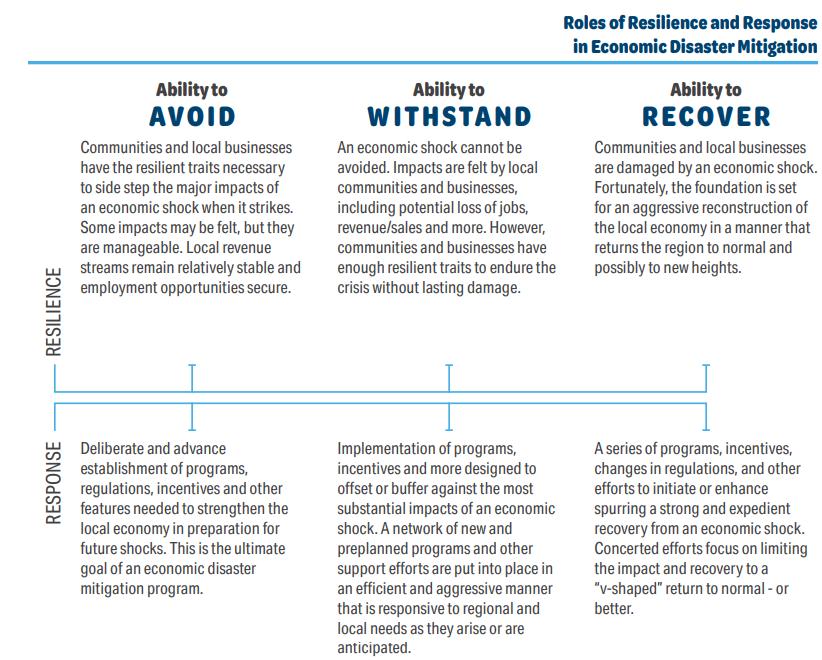
3 minute read
8. Economic Resilience
from TCOG CEDS 2022-2027
by TCOG
Business and Pandemic
The pandemic created by COVID-19 struck the United States and the entire world in a manner unseen since the Spanish Flu in 1918. The economic fallout of the pandemic remains to be fully measured, in part because eradication of the virus is still underway. Generally, the impacts across local economies were widespread
• Businesses closed to the public, including the majority of retailers, dining establishments and entertainment venues. Some adapted to survive. Others never recovered. Across the
United States roughly 74 percent of small businesses reported negative impacts from the pandemic.
• Available labor was erratic as non -essential workers stayed home to remain healthy while others that became sick from the coronavirus or were potentially contaminated were required to quarantine.
• Orders of goods were cancelled as demand plummeted or companies cut purchases to preserve revenue. As a nation, Gross Domestic
Product decreased 3.5 percent in 2020.
• Employees were furloughed or dismissed and the unemployment rate skyrocketed.
Approximately 9.4 million Americans lost jobs in 2020.
Source: usafacts.org “How is the U.S. economy doing compared to pre-pandemic levels”
8 . E c o n o m i c R e s i l i e n c e
Locally, the Texoma region consisting of Cooke County, Fannin County and Grayson County was certainly impacted. Full details are not yet clear, but it appears that local impacts may have been slightly less severe than in other areas of the country. As an example, unemployment in the region spiked from 4.4 percent in March 2020 to 10.3 percent by April. However, by April of 2021, unemployment rates had subsided to 4.8 percent.
Regardless of the severity, the pandemic served as a “wake up call” as communities across the country realized that their economies are vulnerable to “economic shocks”. Also, unlike natural disasters, there is no local emergency response system in place for those moments when economic disaster strikes.
To locally address these concerns, the Texoma Council of Governments developed a Business Disaster Mitigation Plan. The purpose of the plan is to better prepare the region for economic shocks from events such as a natural disaster, a pandemic, or completely unforeseen circumstances. The plan is intended to strengthen the regional economy to better withstand economic impacts and also to allow the region to respond aggressively when an economic disaster strikes.
To do so, the report assesses typical conditions in the region, establishes a worst-case scenario, and crafts recommendations that will allow the region to withstand and respond to the economic impacts of events
Keys to Economic Disaster Mitigation
An economic shock can occur as a result of any one or more of many types of events ranging from a global pandemic or the fiscal crisis of the Great Recession to a local flood. The region’s ability to absorb the resulting economic shock and prevent it from becoming an economic disaster comes down to its ability to strengthen resilience and response. RESILIENCE represents characteristics that make the region less susceptible to economic shocks. In the case of a natural disaster, building codes are put into place so that in the event of a tornado, the impact is minimized as much as possible. The same concepts of resilience can be applied to the local economy.
RESPONSE represents efforts throughout the region to prepare for a potential economic shock and to adapt and act to address impacts. Emergency response is expected during physical events. It is equally essential to mitigating economic shock
Elements of Local Resilience and Response
Both resilience and response rely on characteristics of the People, the Business Environment, the Built Environment and Economic Infrastructure. Traits of all four elements contribute to the region’s ability to avoid, withstand and recover from economic shock.






